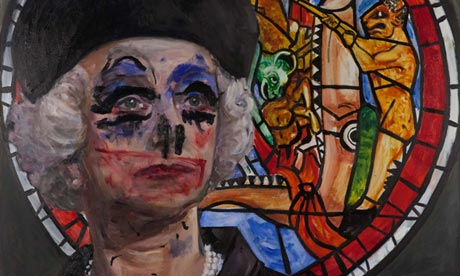
We need to talk about Essex. Surely no county has been so systematically defined and reduced. Simon Heffer's now-infamous Daily Telegraph editorial published in 1990 named the vomiting Thatcherites he encountered at Liverpool Street station as examples of "Essex Man". At around the same time, Chigwell provided the setting for the upwardly mobile prison widows in Birds of a Feather. More recently, of course, there has been Buckhurst Hill and Brentwood's "structured reality" pantomime, The Only Way is Essex. And while Channel 4's Educating Essex, filmed in Harlow, was funny and sensitive, its title seemed to imply that to teach an Essex kid anything was a novel idea.
The fact that Essex is maligned is hardly news. "It has often been said that there is less county pride in Essex than probably any other British county," ran the opening line of the first edition of the Essex Review in 1892. But there are signs that the tide is turning. Last year, two critically lauded plays – Romford-born David Eldridge's In Basildon at the Royal Court in London and Mudlarks by Billericay playwright Vickie Donoghue at the Bush theatre – attempted to untangle the county's complexities through closely studied characters. Both dealt with the tension that has fostered Essex's inferiority complex for centuries: its close proximity to London. The conservative agricultural writer and broadcaster James Wentworth Day described Essex as "the dustbin of London" in his Book of Essex back in 1979.
Now the broadcaster Jonathan Meades is attempting to revive the county in his new BBC4 documentary, The Joy of Essex, aided by director Francis Hanly's meditations on the county's numinous marshlands and evocative creeks. "The programme is an attempt to show an Essex which is unfamiliar given the standard-issue representation of footballers' wives and so on," says Meades. "I've never thought of Essex like that and I've known it all my adult life. It's a creation by the basest end of television and media. And, having created it, they report on it as though it is something they didn't create."
Meades has forebears in Patrick Keiller, whose 1997 film Robinson in Space follows the paper trail of Daniel Defoe to Tilbury. Iain Sinclair has meditated on Essex as a kind of far east London wilderness, and his more mannered disciple Robert Macfarlane, has written about Essex's abundant natural landscape and made The Wild Places of Essex for the BBC in 2010. The notion shared by all of them is that in between the cliches and the snobbery is a possibility of a more intellectual reading of the county. There are signs that this is finally happening. Dawn Mellor's What Happened to Helen?, which opened earlier this month at Southend-on-Sea's Focal Point Gallery, queries the legitimacy of local identity through a series of portraits of Leigh-on-Sea's very own Helen Mirren. The actor is positioned rather graphically in the assumed roles of master and servant in a narrative inspired by Jean Genet's The Maids – one image features Mirren with a toilet brush in her mouth and covered in a unidentified brown substance.
Mirren left Leigh for the chance to act in London in her late teens. In 2007 she courted local ire when she referred to her hometown as the "armpit of the world". "It was the disproportionate level of rage that interested me," says Manchester-born Mellor. "The horrendous comments on blogs. She always becomes 'our girl' when she wins an award, but when she says something bad she is mocked. I don't get what it means to celebrate a local hero if they don't live there."
The Focal Point is moving from its 70s-built library location and reopening in the town's new library and learning space, The Forum, in the autumn, with a show by the current Turner prize-winner, Elizabeth Price. As with all artists who show here, Price has been asked to make a work that responds to the area. The aim is to reverse the magnetism of the capital and imbue the area with a sense of cultural self-worth. "We try to imagine Southend as the centre of production, and then ship the work out to galleries in major capitals such as London and New York," says the gallery's director, Andrew Hunt.
"It is the perfect place to do this kind of thing because everybody thinks they know what Southend and Essex is, but actually if you look into history there are all sorts of interesting things going on geographically, culturally, politically and economically. There's a cultural snobbery compared with somewhere like Kent, the Garden of England. We're trying to redress the balance."
The Joy of Essex is at 9pm on Tuesday 29 January on BBC4; What Happened to Helen? runs until 30 March at the Focal Point Gallery in Southend-on-Sea

